A ten-foot-long, 7 lbs. wooden pole seems to float through the air. It enters are dark corridor that seems to slowly descend on an incline. Without any visible hands to wield it, the pole moves back and forth in a semi-circle, poking at the tiles.
Twenty feet behind the pole, a party of adventurers follows. Since they all have Darkvision, torches are not necessary.
The floating pole comes to a door. The nob turns and the door opens as if by magic. The pole and the party continue down another long corridor.
Suddenly, the floor gives way in front of the pole. The butt end apparently stuck the tiles that gave way but the pole is still floating. Whatever was holding the pole didn’t fall in.

The party cautiously makes their way to the edge of the pit. Peering over they see the spikes at the bottom of the pit that would have greeted any party members unlucky enough to have fallen in.
After navigating the pit through tools, cooperation, and creativity, the party continues on their march, with the pole 20 feet ahead. Suddenly, crossbow bolts fly out from the wall. The pole falls to the floor.
The party takes a defensive formation and waits for an ambush. After a long time, they cautiously go forward to investigate.
Morgran the Mountain Dwarf Evocation Wizard uses his Investigation proficiency to detect a broken tripwire on the floor. He sighs. His Unseen Servant is temporarily dead, but at least Morgran and his companions are still alive. Welcome to a Unseen Servant 5e Guide.
Bottomline on Unseen Servant 5e
Unseen Servant is a 1st level spell that creates an invisible, non-combatant servant made of force. Unseen Servant is available to wizards, warlocks, and bards.
How Does Unseen Servant 5e Work?
As per Player’s Handbook p. 284, here are the stats:
- Unseen Servant
- 1st level conjuration spell (ritual)
- Casting time: 1 action
- Range: 60 feet
- Components: V, S, M (a bit of string and of wood)
- Duration: 1 hour
You create a non-combatant servant made of force somewhere within an unoccupied space within range (60 feet).
It can’t fight. If it moves more than 60 feet away from you or drops to 0 hit points, the spell ends. The servant has the following stats:
- Armor Class (AC) 0
- Hit Points 1
- Strength 2
- Movement 15 feet/turn
The servant can perform simple tasks that a human servant could do:
- Fetching things
- Cleaning
- Mending
- Folding clothes
- Lighting fires
- Serving food
- Pouring wine
Although the Unseen Servant cannot fight, you can issue simple commands to the Unseen Servant as a bonus action during combat. It can be commanded to move up to 15 feet and interact with a single object during a turn.
The Components mentioned above are V, S, M. For those who don’t know, this stands for:
- V = verbal (You, the caster, have to be able to talk. If you get shut up with a Silence Spell or a gag in your mouth, you can’t cast Unseen Servant.
- S = somatic (You need at least 1 free hand to cast the spell. If you’re in handcuffs, you can’t cast Unseen Servant.)
- M= material (You need to use some actual object to cast the spell. For Unseen Servant you need a bit of string and a piece of wood, probably to make a simple marionette. You can replace this material component with an Arcane Focus.
Is Unseen Servant Good?
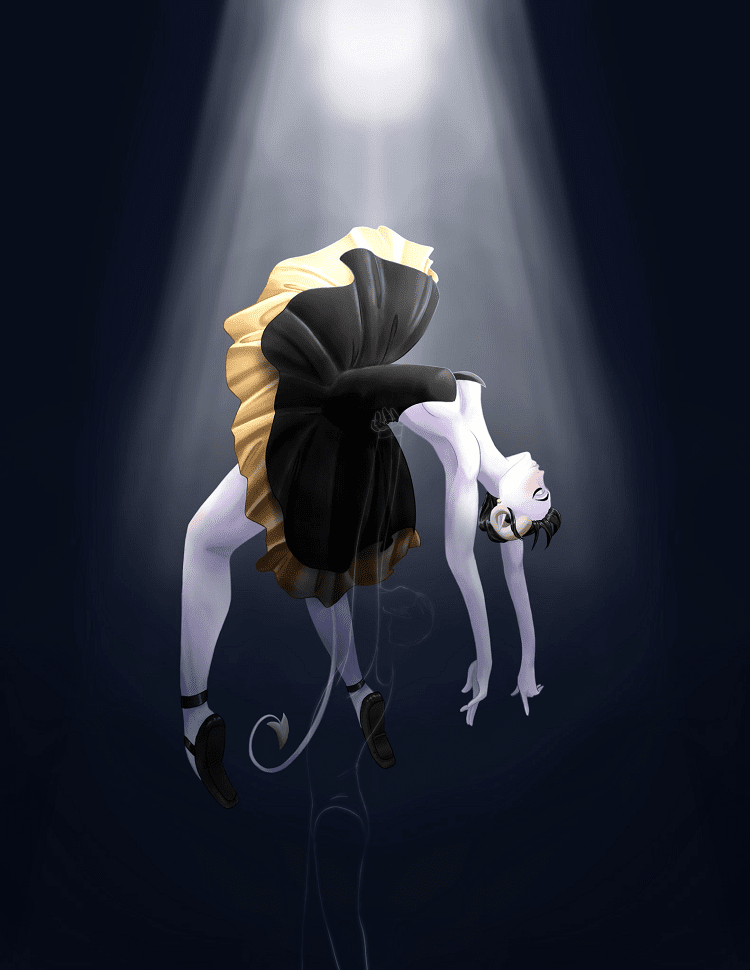
Yes. Unseen Servant is good. In my opinion, it’s possibly the most important 1st level utility spell in the game, after Find Familiar. Like most utility spells, it probably won’t kill many monsters, because it’s not a combat spell. But, a party that’s 100% combat spells is a poorly played party and is ripe for a reckoning.
As you can see in the introduction above, Unseen Servant is great for the party’s sapper when it comes to setting off traps harmlessly. There is also the action economy issue. Anything you can do as a bonus action is gold even at high levels of play. My Applications section below will explain more.
Unseen Servant 5e Applications
Basically, Unseen Servant is a low-grade Telekinesis Spell. You can’t use it to restrain or move opponents. You don’t have as high a carrying capacity as Telekinesis.
In 5e, however, its carrying capacity is not specified in PHB except that it has a strength of 2. PHB doesn’t really specify what 2 Strength means in terms of carrying capacity, but we have lots of real-world animals in the back of PHB. Based on that, Unseen Servant is equal to a bat but stronger than a frog and weaker than a cat.
This is a weakness and contradiction within 5e game design. Morgran was clearly able to move a 10-foot-pole around according to PHB rules:
“you can mentally command the servant to… interact with an object.” PHB, p. 284.
“Interact with Objects Around You …Tap the floor with a 10-foot pole” PHB, p. 190
Can a bat do that?
Even Mage Hand, a cantrip, is capable of lifting 10 lbs. and therefore manipulating a 7 lbs., 10-foot-long pole. My suggestion is that you talk with your DM about how he or she wants to interpret the rules regarding this spell’s carrying capacity before you choose it.
Makeshift Find Traps
As you can see from the intro above, my view is that the most important application of Unseen Servant is as a Makeshift Find Traps, so I will discuss it at length.
Unseen Servant vs Mage Hand
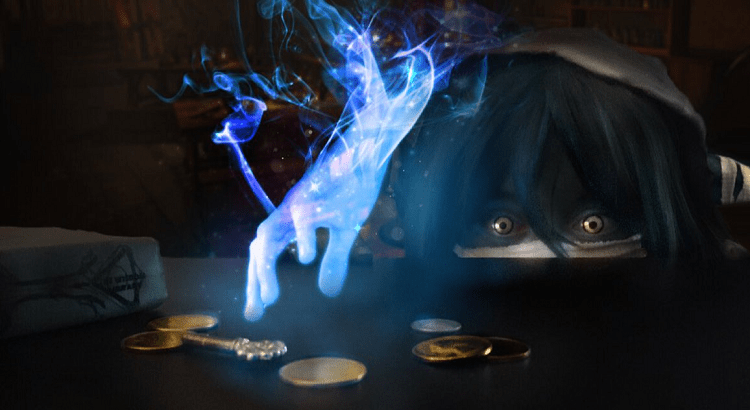
So, why not just skip Unseen Servant and go to Mage Hand?
Unseen Servant has a duration of 1 hour and Mage Hand can be cast all day long because it’s a cantrip.
First, if the DM gives you the slightest problem regarding using Unseen Servant, that’s exactly what you do. Just use Mage Hand any way you want and if the DM complains, tell them that they were the ones to force Unseen Servant out of the game.
Ok. Suppose you have a cool DM that allows players to use Unseen Servant in the way Morgran did in the intro. Why not use Mage Hand instead and save yourself a spell slot? Three reasons:
Range
Unseen Servant is 2x the range. Maybe having Mage Hand walk 20 feet out in front of the party the way Morgran did with Unseen Servant is enough. If you want a longer range for certain situations, however, you will need Unseen Servant.
Action Economy
Controlling Mage Hand is an action. Controlling Unseen Servant is a bonus action.
Therefore, while using Unseen Servant, I can still commit other actions during my turn: cast spells, fight, etc.
While controlling Mage Hand, I can do none of those things, unless I can do so as bonus actions.
Body
An Unseen Servant has a body and occupies space and a Mage Hand does not. Mage Hand would have set off the pit trap but not the trip wire.
I could have had 2 casters use 2 Mage Hands and maybe then I would have been able to set off the trip wire. 1 hand could have operated the pole while the was hopping around on the floor like a spider.
The thing to remember is that a party of adventurers doesn’t exactly know what kind of traps and dangers they are facing. A pole and a hand on the floor prepare for 2 dangers, pits and trip wires, but not nearly as many possible dangers as a body walking in front of the party.
Basically, as a sapper/scout, an Unseen Servant’s job is to get killed so you and your companions don’t have to.
Duration and Resetting
Unseen Servant has a duration of 1 hour and Mage Hand has a duration of 1 minute. You could, of course, have a caster reset Mage Hand every minute, but let’s imagine that.
When a party explores a dungeon, they are basically doing what in the military would be called a patrol. In the military, the patrol has a formation and in D&D the players have a marching order.
Depending on the danger, they may move slower or faster. There is always a cost-benefit analysis, speed vs. security. It’s that way both in the military and D&D.
In the beginning, a DM might be lenient on speed during a dungeon exploration, but as you level up, the DM is going to start punishing players who abuse long rest and move too slowly in the name of caution.
Caution is one of the first things you learn from D&D and that is probably a very good thing. Your caution, however, has to be realistic.
If a character resets Mage Hand every minute during an 8-hour adventuring day, that character is resetting Mage Hand 480 times per adventuring day. That’s going to slow down your party’s movement a lot.
It’s also going to make that character useless for Passive Perception checks and practically anything else while on Mage Hand Duty.
Worse. Let’s say Morgran has been patrolling a dungeon with his party and operating and resetting Mage Hand for the past 3 hours. He’s had to reset his Mage Hand 180 times.
Let’s say he suddenly has to stop his Mage Hand and fight some orcs within 3 turns, 18 seconds. How well is he going to fight after resetting a cantrip 180 times without some type of rest?
If I were the DM, I would give a disadvantage, due to fatigue on all fighting, casting, and ability checks until he’s had a short rest. If I’m the DM, Morgran would need a short rest after every 60 resets or he would be at a disadvantage.
There’s also the matter of Verbal Components. Even the most lenient DMs are probably not going to let you whisper an incantation every minute. Obviously, if your party is casting for every minute of their patrol, every monster on that dungeon level is going to know of both the party’s existence and location.
Unseen Servant vs Find Traps
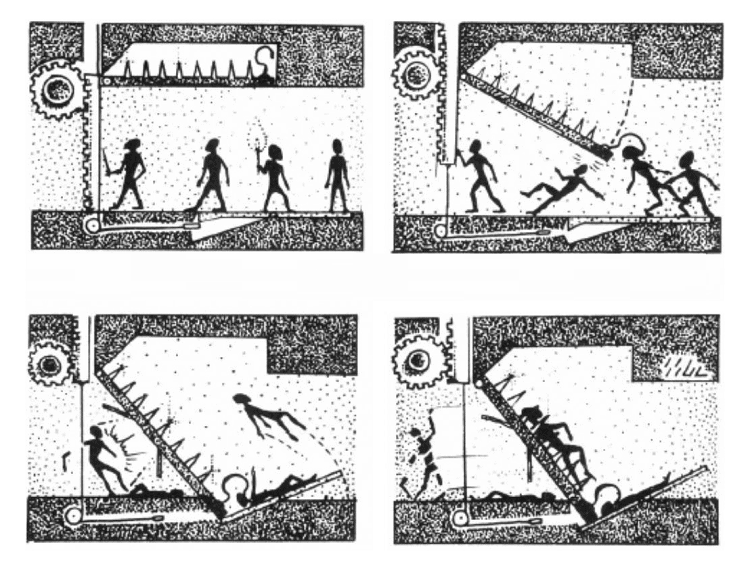
Back in 1e, Find Traps was a great spell and a very important part of the game. It did its job in that it showed where the traps were, but only in a particular direction and for a particular duration, 30 minutes. You had to be 3rd level and above to cast it and not all casters could cast it.
All was well until Wizards of the Coast (WotC) decided to nerf it. It lets you know that traps are present but doesn’t show you the location.
It has been said that WotC did this to appease angry DMs. I say they’ve made the spell so useless that they may as well have removed it from the game entirely.
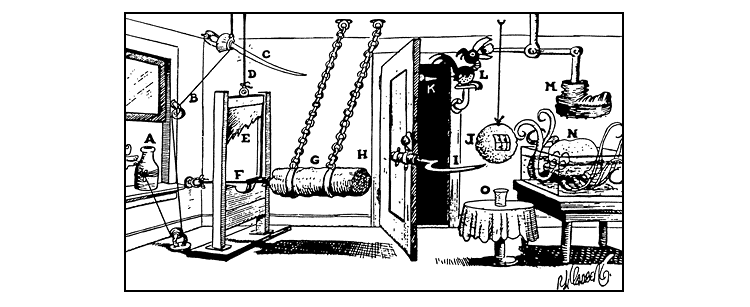
Now, they expect us to believe in a fantasy world where high-level characters can literally raise the dead and travel to hell and back, they can’t use a spell to detect a simple pit trap that was dug by a bunch of kobolds? Bad storytelling on WotC’s part!
What they should have done was made sure that the game had enough spells to conceal various traps from a Find Traps Spell. That’s how all games are played, counter-for-counter.
Find Traps would never work in a work at all parts of a wizard’s castle because magic is what wizards do. It should work, however, against basic traps in low-level dungeons.
As you can see with the Mage Hand example above, abusing character powers gets corrected naturally if the game is run well. Nerfing and punishing players isn’t necessary. Choice and consequence is what this game is about.
DMs, if a character wants to abuse Mage Hand, don’t tell them they can’t. Let them do it and then have the monsters start showing up on a regular basis because of the noise. Don’t tell them why. Let them learn.
Now that you know that Find Traps has been nerfed, Unseen Servant becomes even more valuable.
Unseen Servant is definitely not overpowered because it only lasts for one hour. Wizards can use Arcane Recovery to renew it after a short rest, but they can only do that once per day.
That means that wizards get 2 hours’ worth of Unseen Servant with 1 spell slot. Wizards have to decide when is the best time to you use Unseen Servant and when to go without.
Warlocks could of course choose Unseen Servant and renew it every short rest. That comes at a price, however, because their spells are known spells, not prepared spells in their book that they can simply switch out as a wizard would.
If a warlock is willing to give up a known spell for Unseen Servant, they deserve to find all the traps they want in my opinion as a DM. That is, provided that they don’t abuse their short rests.
Bards can only use Unseen Servant once per long rest, so there is really no danger of it being overpowered for them.
Prepare Defenses/Traps/Ambush
Scouting with Unseen Servant, Find Familiar, ranger characters, etc., is what you do before you enter the enemy’s battlespace. Now I’m about to show what you do when the enemy enters your battlespace.
Laying Caltrops and Other Traps
If you’re preparing a hasty ambush, like a fight that will happen in the next 5 turns, every action counts. Possibly, creating an Unseen Servant to accomplish minor tasks, like laying out caltrops and hunting traps, etc., can free up party members for more important tasks with their limited turns.
Actually, if you have a full hour and very soft ground, your Unseen Servant’s job can be to prepare a pit trap, including digging and finding materials for concealment. The same can be done for falling object traps.
If you have access to highly flammable materials like oil and gunpowder, you can have your unseen servant lay out these explosives and prepare the trigger.
The Unseen Servant can wait on standby, at a point within 60 feet of the caster with a hidden lantern. When the enemy enters the killzone, the Unseen Servant can use the lantern to trigger the explosives.
If your ambush is not a hasty ambush, but a prepared ambush or a siege, your Unseen Servant can spend up to an hour bolstering defenses: digging trenches, filling sandbags, sharpening stakes, building a wall, etc.
Remote Detonator and Battlespace Control
Once you’ve prepared your position, if you have time left on your 1-hour spell duration, your Unseen Servant’s job is not over. In modern tactical terms, think of your Unseen Servant as a portable, remote switch with a range of 60 feet.
That switch can be used as a remote detonator to trigger traps like the flammables that can be ignited by your Unseen Servant.
That switch can also act as a battlespace control:
Gatekeeper
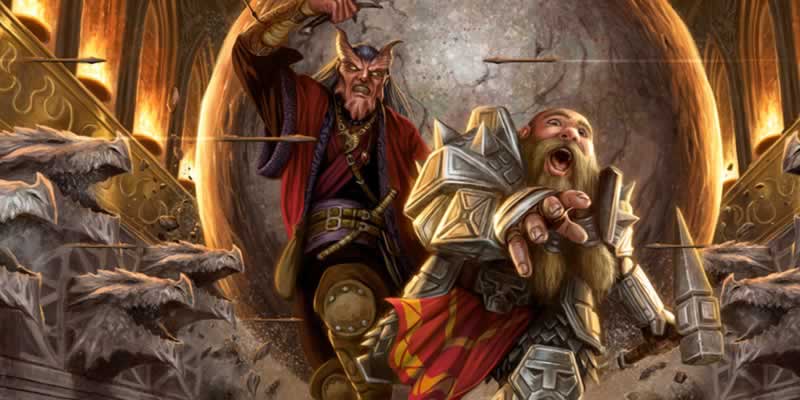
If there is a gate, locked door, or any other sealable portal, and the party has access to the key/unsealing mechanism, they can use that gate to have greater control of the battlespace. This can be very useful for continuous area-of-effect spells like Spike Growth and Cloud of Daggers.
The Unseen Servant can act as the agent for the opening and sealing of this portal. Unseen Servants cannot operate magic items and planar portals are magical.
So, if the mechanism for opening and closing an extra-planar or extra-dimensional portal is magical, like a magic staff or magic key, the Unseen Servant can’t operate it.
However, if the mechanism is a mundane item, like a non-magical table, that controls the portal by being moved around from position to position, then the Unseen Servant can operate it.
Hold Bait
This works well with monsters of animal intelligence or less. You take your food rations or any food source, and you use your Unseen Servant to lure that animal wherever you want: into an ambush, out of your path of egress, into some enemies, etc.
Unleash the Kraken
Sometimes the trap in question is not a thing, but an actual creature. The switch the Unseen Servant operates could simply be unlocking a cage, cutting a leash, or destroying the material components of some binding spell that was being used to contain some demon, kraken, etc.
Create Diversion
Unseen Servants can’t fight, but they can be used as a diversion. If I take anything that’s been made to look like a threat, I can float it around enemies as a flanking maneuver and do it as a bonus action.
That means I can cast other spells while flanking them with my Perceived Threat, all in the same turn. If they believe it, they can waste resources dealing with and probably killing my Unseen Servant.
Perceived Threat
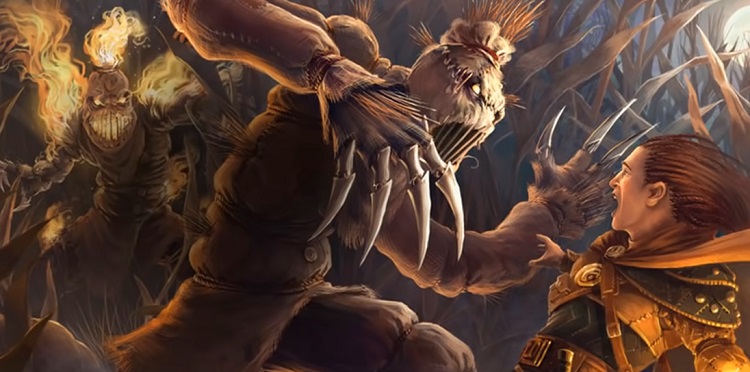
Floating Crossbow
It’s important that I tell the DM that you are not trying to actually hit anything because your Unseen Servant can’t fight.
Maybe some highly intelligent opponents are too smart to fall for a Floating Crossbow aimed at/trying to flank them, but some low-intelligence opponents like kobolds and gnolls might fall for it. I certainly don’t think rolling an Intelligence check for the enemy would be inappropriate.
Floating Staff/Rod/Wand/Vial/Scroll
Anything made to look like a magical casting device floating in a flanking maneuver can qualify as a perceived threat. Whether or not the enemy is truly fooled depends on the enemy’s Intelligence and familiarity with magic items and magic spells.
Floating Scarecrow
Obviously, a coatrack or light frame could be carried around by Unseen Servant and moved at 15 feet/turn within spell range. This frame could be adorned to appear like a person just as a scarecrow would be. For animals, scarecrows work in the real world, even when they’re not being moved by an Unseen Servant.
Would I expect a bear or wolf to be frightened by a Floating Scarecrow?
Depending on how motivated that animal was to be combative in the first place, maybe or maybe not.
Would I expect anything with animal intelligence or lower to react to a Floating Scarecrow approaching its hex as a Perceived Threat and use one of its actions to solve the problem? Absolutely. I wouldn’t even roll an Intelligence check. You can also give your Floating Scarecrow a voice through Thaumaturgy cantrip.
Rulings on Perceived Threats
The DM should not be allowed to prevent a player from using an Unseen Servant to interact with an object during the caster’s bonus action and moving at a speed of 15 feet/turn within the spell’s range of 60 feet. This is a game of choice and consequence, and preventing the above would be robbing the players of their free agency.
A DM has full authority, however, in determining how the enemies interact with this floating object carried by an Unseen Servant. Do they attack the object? Do they ignore the object? Do they laugh and reply to the players with a demoralizing taunt?
For example, Githyanki are a psionic, spellcasting society that dwell on the Astral Plane and used to be slaves to the mindflayers.
There is no way that even the lowest ranking members of that society are going to be fooled or intimidated by an AC 10, 1 HP Unseen Servant! If you explain it that way, most players would respect the game world and accept it.
Take the Treasure

This can work well on even intelligent monsters, provided that they are greedy. If you’re fighting a powerful monster, like a dragon, use your Unseen Servant to start fetching items.
It’s a win-win for you and a lose-lose for the dragon/other monster/Big Bad. Either you take the dragon’s treasure, win, or the dragon kills your Unseen Servant, still a win for you and a lose for the dragon.
Why?
The action economy principle is possibly the most important principle to master for players that want to be good 5e combatants.
For most characters, a dragon qualifies as a Big Bad, an overpowered monster/NPC that the party fights as a team at the climax of an adventure. Every Big Bad must be more powerful than any individual player character to qualify as a Big Bad. It’s only through excellent teamwork that a party could ever have a chance of defeating it.
Therefore, the turn of a big bad is worth significantly more than the turn of any player character in the party. Unseen Servant isn’t even a turn, it’s a bonus action. Even if my Big Bad has the power to kill my Unseen Servant with just a bonus action, it’s a trade I’d usually be happy to make.
Just like the turn of Big Bad is worth significantly more than the turn of any player character, its bonus action will be a bigger loss to it than my bonus action is to me. It’s the equivalent of sacrificing a pawn (your Unseen Servant and your bonus action) to take a rook (any part of a Big Bad’s turn).
If my Big Bad is a wizard, I may go one step further than take the treasure. I might break the treasure. I could use my Unseen Servant to start torching the library and breaking all of the vials and boilers and beakers in the alchemist’s laboratory.
I might be destroying some of the treasure I would get if I win, but I can’t use that treasure if I’m dead. No matter how we do it, if we defeat the Big Bad, they’ll be plenty of treasure to go around and the whole party will most likely level up.
Interact with Objects
Players looking to maximize their Unseen Servants should check the Interacting With Objects table on page 190 of PHB. I encourage players to find uses of Unseen Servant never thought of.
FAQs
Question: Can an Unseen Servant be Used to Commit a Help Action to Give Advantage on an Ability Check or as an Ally to Set up Sneak Attack and Assassination?
Answer: Lead rules designer for WotC Jeremy Crawford has been quoted on rpg.stackexchange.com as saying that an Unseen Servant does not count as an ally. That means, no. An Unseen Servant can be used to create diversions in the manners described above but not in a way that creates advantage or sets up Sneak Attacks and Assassinations.
Question: Can an Unseen Servant be Used to Throw Pebbles from a Magic Stone Spell?
Answer: No. RAW (rules as written), Unseen Servants cannot use magic items. Magic Stone, as the name implies, empowers the caster to turn pebbles into magic items.
Question: Can I Run Multiple Unseen Servants at the Same Time?
Answer: Yes, provided that you have sufficient spell slots. Each Unseen Servant, however, requires one of your bonus actions for one of your turns.
Conclusion
To summarize, Unseen Servant allows the caster to create an invisible, AC 10, 1 HP, non-combatant servant to do basic tasks like interacting with objects for a duration of 1 hour.
My opinion is that the best application of Unseen Servant is to use it as a scout to set off traps and ambushes. It’s a very versatile utility spell, however, so players tend to get very creative and push the envelope with its applications.
Unseen Servant has been a point of contention for nearly half a century. Players have sought to weaponize Unseen Servant throughout all 5 editions and throughout all 5 editions, DMs have sought to reign them in.
That’s not a bad thing. As someone who’s been on both sides of the table, as both a player and a DM, I’m going to offer some advice.
My advice to DMs is to be firm but fair. If you punish players for thinking outside the box, you’re going against everything this game was designed to do.
If I was in a life-and-death struggle in the real world, I would weaponize anything and everything I could get my hands on. I would also, however, understand that a plan used in a life-and-death situation has to be realistic. If I attempt a hair-brained scheme, I’m wasting precious time and taking unnecessary risks.
Players, treat your DM as you would the referee in a sporting match because D&D is basically a tabletop sport.
Proposing an unconventional use of spells and game features like Unseen Servant is the foundation of the problem-solving aspect of this game, so, please, feel free to make your proposal without worrying about criticism or retaliation.
Knowing that, accept the DMs decision as you would the referee’s call in a sporting match. No yelling or name calling. No cheap-shot accusations of bias. No wasting precious playing time, yours and everyone else’s, by beating a dead horse. Pick up the dice and roll on.
Please remember that a ruling on a round of make-believe combat is insignificant in comparison to everyone’s gaming experience over time and the real-world relationships across the table. Even the best DMs are going to make bad calls sometimes.
If the DM is a bad DM, you’ll know it soon enough. There are plenty of DMs and other game masters in this world. Don’t waste time with anyone, in the game and out of the game, who doesn’t respect you.
- Perform Bewitching 5e Guide - October 1, 2022
- Inspiring Leader 5e Guide - September 20, 2022
- Scrying 5e Guide - September 19, 2022

